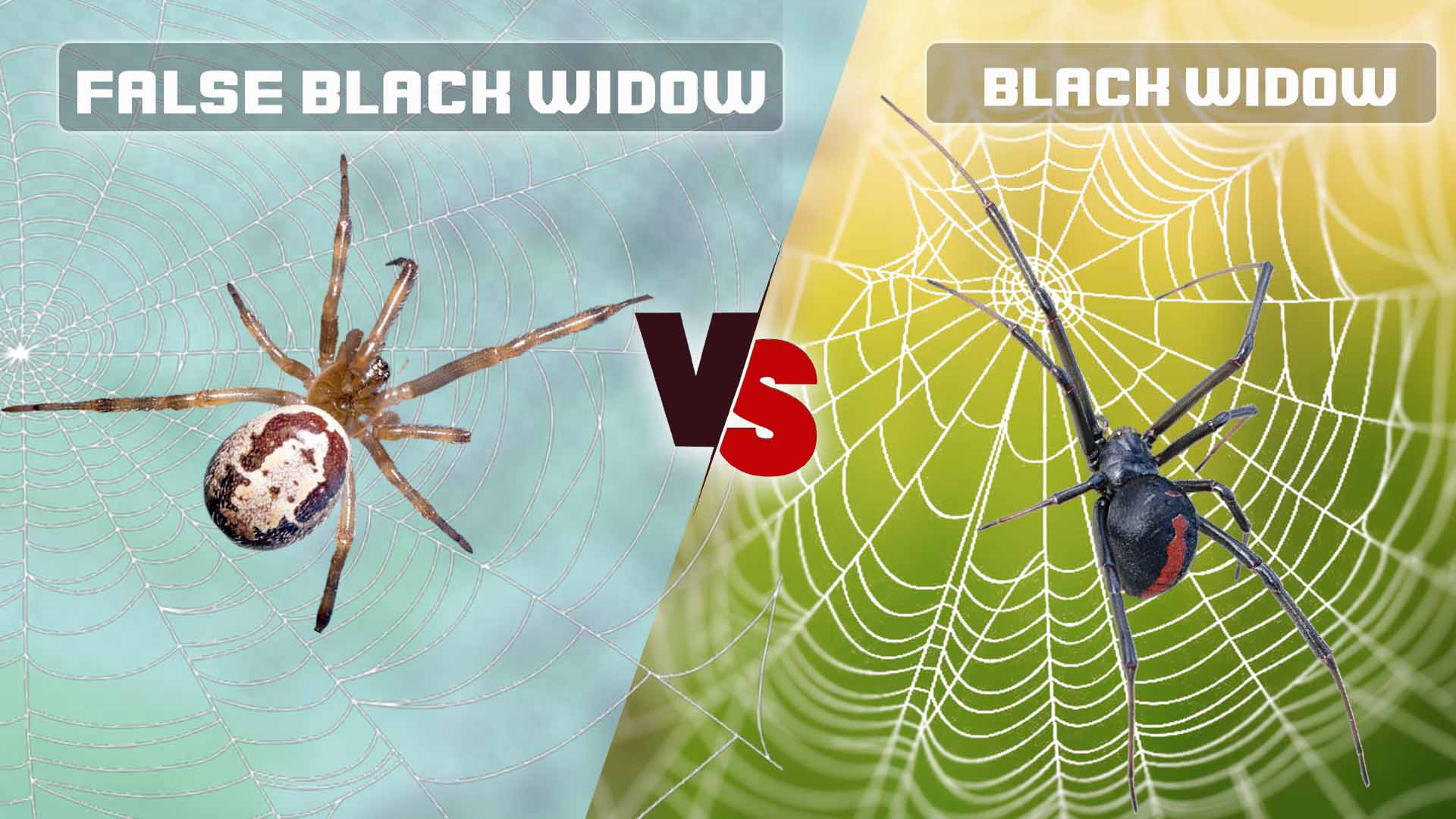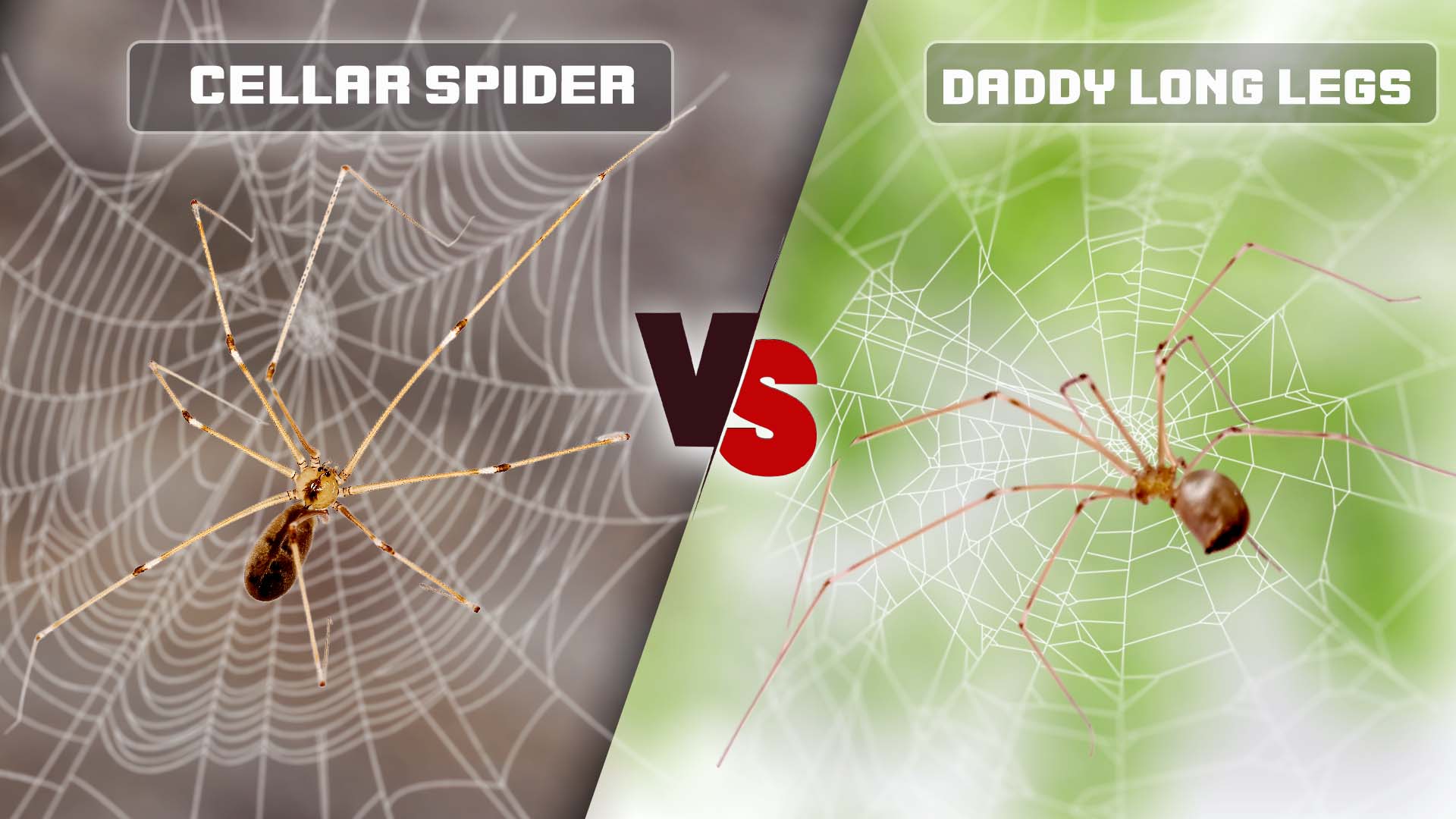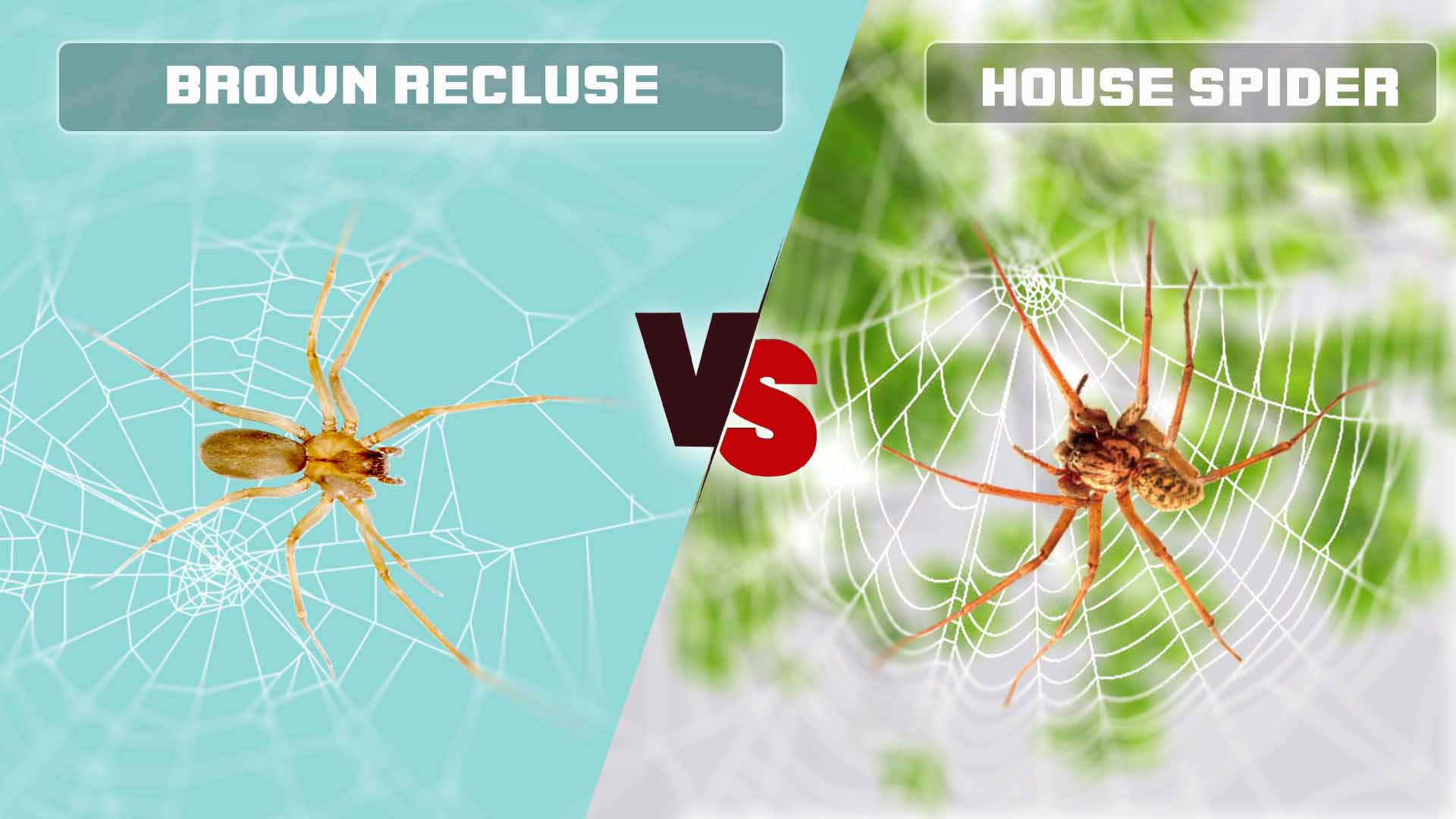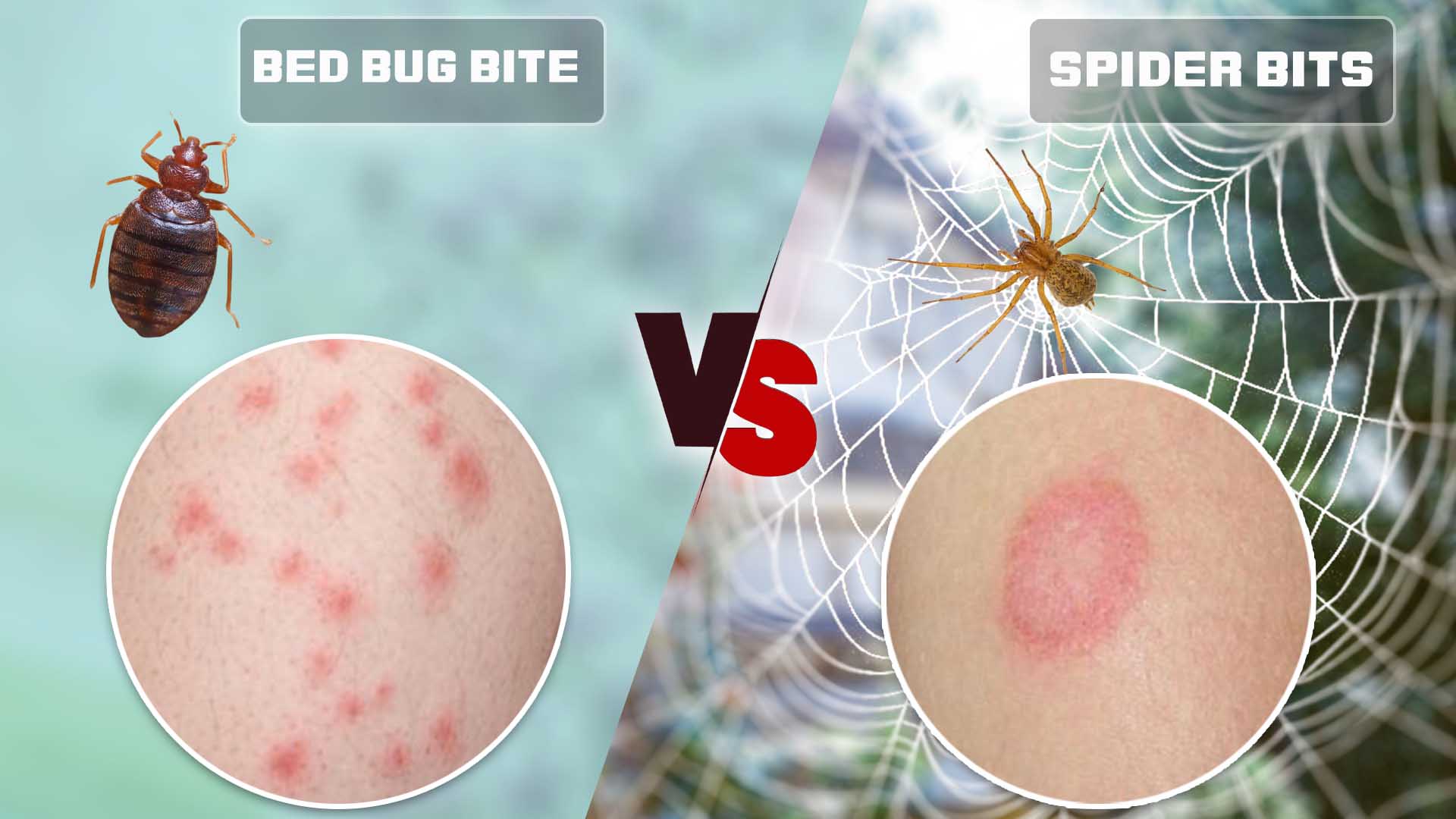Spiders have long been a subject of fascination and fear for humans. Among the most notorious of these eight-legged creatures are the black widow spiders. However, there exists a lesser-known arachnid, often mistaken for its infamous cousin – the false black widow.
In this article, we will explore the key differences and similarities between the false black widow and the true black widow, shedding light on their behaviors, venom, and overall significance in the world of arachnids.
Black Widows
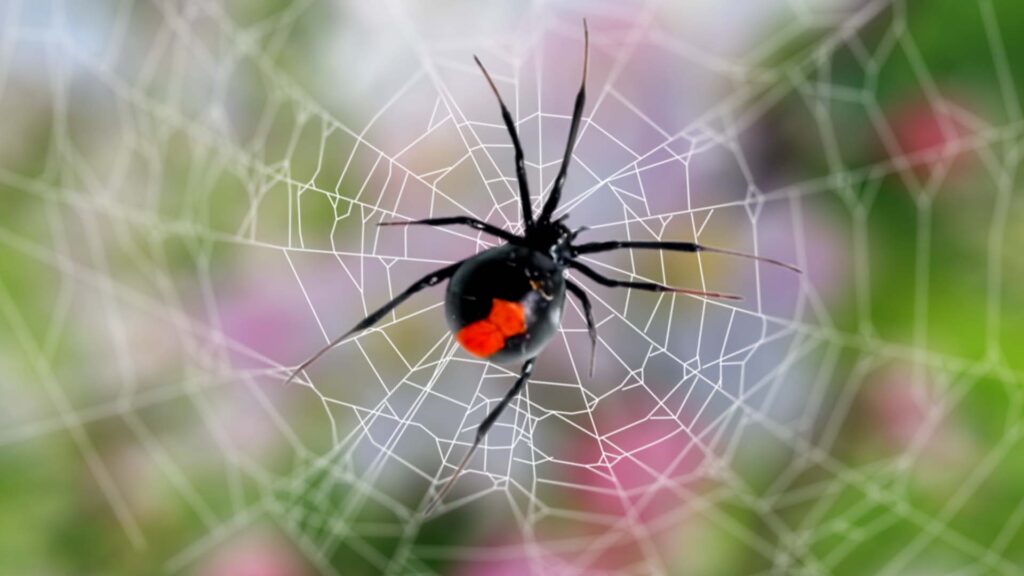
Before delving into the comparison, let’s establish some fundamental knowledge about black widow spiders. True black widows belong to the genus Latrodectus, and they are renowned for their potent neurotoxic venom. There are several species of black widows, but the most well-known is the Southern black widow (Latrodectus mactans), primarily found in the southeastern United States. The females of these species are notorious for their distinctive appearance, featuring a shiny black body with a red hourglass-shaped mark on their abdomen.
Black widows are not aggressive spiders and usually bite in self-defense. Their venom contains neurotoxins that can cause severe pain, muscle spasms, and other unpleasant symptoms in humans, although fatalities are exceedingly rare.
The False Black Widow: A Look-Alike
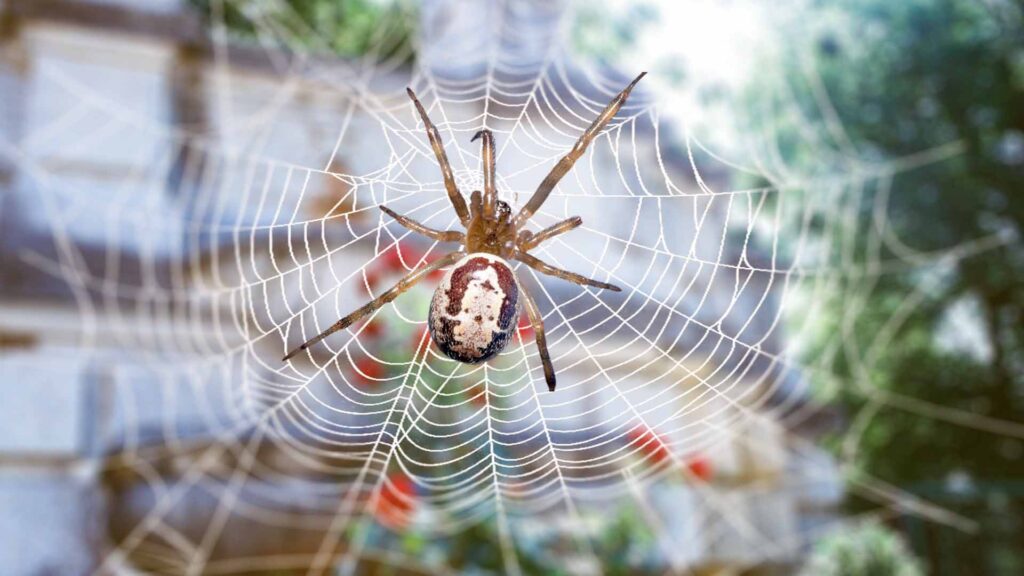
The false black widow, scientifically known as Steatoda nobilis, is a spider that often gets mistaken for the true black widow due to its similar appearance. These spiders are commonly found in Europe and have even made their way to North America and other parts of the world through international trade and travel. The false black widow is often referred to as the “cupboard spider” due to its preference for hiding in dark, enclosed spaces like cupboards, basements, and sheds.
Appearance Comparison
One of the primary reasons for the confusion between these two spiders is their similar appearance. False black widows, like true black widows, have a shiny, bulbous abdomen. They are typically dark brown to black in color, but their markings are less distinct compared to the vivid red hourglass mark found on true black widows. Instead, false black widows have a series of pale, cream-colored markings or lines on their abdomen, which can sometimes resemble a broken or incomplete hourglass shape.
Another key difference in their appearance is the overall size. False black widows are generally smaller than their true counterparts, with females measuring around 10-14 millimeters in body length, while female black widows can reach 12-16 millimeters.
Web Construction
Both false black widows and true black widows are skilled web weavers, constructing intricate, three-dimensional webs to capture prey. However, there are some differences in their web-building behaviors. True black widows often build irregular, messy webs in undisturbed, hidden locations. These webs are usually not visible to humans until they are accidentally disturbed.
On the other hand, false black widows tend to build their webs in more exposed locations, making them more noticeable to humans. These webs are usually flat, sheet-like structures with a funnel-like retreat where the spider hides. The exposed location of the false black widow’s web can sometimes lead to accidental encounters with humans, contributing to their reputation.
Venom Comparison
While the false black widow’s venom is not as potent as that of true black widows, it can still cause discomfort and mild symptoms in humans. The venom of false black widows primarily contains cytotoxins, which can cause localized pain, redness, and swelling at the site of the bite. In some cases, individuals may experience mild systemic symptoms such as nausea, muscle pain, and malaise. However, severe envenomations are exceedingly rare, and fatalities are unheard of.
In contrast, true black widow spiders possess a more potent venom that contains neurotoxins, such as latrotoxin, which can lead to severe muscle pain, cramps, and even paralysis in severe cases. However, fatal bites are extremely rare in healthy adults, thanks to the availability of antivenom and medical treatment.
Behavioral Differences
While both false black widows and true black widows are generally reclusive spiders that prefer to avoid confrontation, there are some notable differences in their behaviors. True black widows are known to be more aggressive when defending their webs or egg sacs. They may bite if they feel threatened, but they usually give warning signals such as raising their abdomen before striking.
False black widows, on the other hand, are less aggressive and more likely to retreat and hide when disturbed. They are not as prone to biting as true black widows, making them less of a threat to humans.
Distribution and Global Impact
True black widows, especially the Southern black widow, are more widespread in their distribution and are found in North and South America. While their bites can be painful and cause discomfort, fatalities are extremely rare, and medical treatment is usually effective.
False black widows, originally native to Europe, have expanded their range significantly due to globalization and trade. They have been reported in countries such as the United States, Canada, and New Zealand. Although their bites can cause localized discomfort, they are not considered a significant medical threat.
FAQs
Is the false black widow poisonous?
Yes, the false black widow spider (Steatoda nobilis) is venomous, but its venom is significantly less potent than that of true black widow spiders (genus Latrodectus). The venom of false black widows primarily contains cytotoxins, which can cause localized pain, redness, and swelling at the site of the bite. In some cases, individuals may experience mild systemic symptoms such as nausea, muscle pain, and malaise. However, severe envenomations are exceedingly rare, and fatalities are unheard of.
Is the false widow the same as the black widow?
No, the false widow (Steatoda nobilis) is not the same as the true black widow (genus Latrodectus). While these spiders share a similar appearance and are often mistaken for one another, they belong to different genera and have distinct characteristics. The false widow is smaller in size, has less distinct markings on its abdomen, and its venom is less potent than that of true black widows.
Why is it called a false widow spider?
The false widow spider earned its name due to its resemblance to the true black widow, specifically the Southern black widow (Latrodectus mactans). The two spiders share a similar shiny, bulbous abdomen and dark coloration, which can make them look alike at a glance. However, the false widow lacks the vivid red hourglass mark on its abdomen that is a trademark feature of true black widow spiders, leading to its classification as a “false” or look-alike widow spider.
What colors are false black widows?
False black widows (Steatoda nobilis) typically range in color from dark brown to black, and their appearance can vary somewhat depending on factors such as age and gender. One of the distinguishing features of false black widows is the presence of pale, cream-colored markings or lines on their abdomen. These markings may resemble a broken or incomplete hourglass shape, but they are not as vivid or well-defined as the red hourglass mark found on true black widows. Additionally, false black widows may have other markings on their bodies, but they are generally less conspicuous compared to their true black widow counterparts.
Conclusion
In the world of arachnids, the false black widow and the true black widow share a striking resemblance but differ in various aspects, including venom potency, behavior, and distribution. While both spiders have the potential to bite humans and cause discomfort, severe envenomations and fatalities are exceptionally rare.

